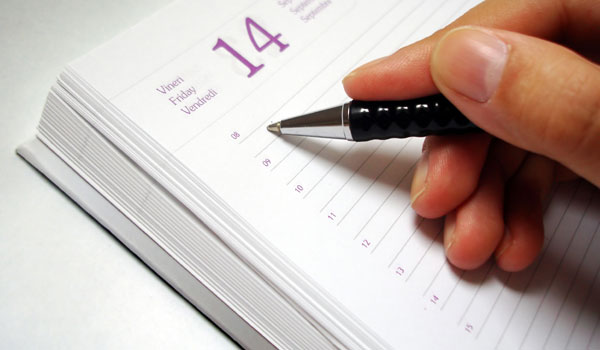Breastfeeding is very natural process … once you get the hang of it. I am detail orientated, and I could not just go with the flow when I brought my daughter home from the hospital. I kept detailed notes about feeding and diapering. I recorded the time she started feeding, how minutes on each breast, and the contents of her diapers (often including notes about color or consistency). I did this for eight months, carefully keeping track of the new foods we introduced once nursing became routine.
My son got far less documentation. Instead, I drew a line vertically down the page. On one side, I recorded feeding times, and on the other I noted diapers. After the first few weeks, I stopped recording how many minutes he fed and on which side. By then, I knew if he had eaten well without watching the clock and could tell which breast to start on by feel. But the real reason that I scaled back on the documentation was because it was so hard to record everything. I was busy watching my daughter Natalie play in the living room or we’d be out in public. Even at night, I would fall asleep with him without recording anything.
William’s documentation was sufficient, but Natalie’s was more useful. I would advise any new mom to log information somewhere in between.
For the first few weeks,
- Keep track of everything. Caring for a newborn is a hormonal, exhausted haze. Its unfair to expect yourself to remember when the last poop was or how many feedings its been today. Writing it down until some patterns start to emerge will help you also spot any potential problems with baby’s growth and your milk supply.
- Use an easy grid. Mine for Natalie had columns that went: time, left, right, diaper, notes. I deliberately had left and right in that order so that it matched my boobs! Notes would be where I would write how many ml pumped or any usual behavior.
Later:
- Write down the feeding times, but don’t worrying about the minutes per side unless they are unusual.
- Keep a tally of the pee and poop.
- Keep a log for new foods, no matter what feeding method you use. This can help you track possible food allergies or intolerance.
- If you don’t want to grope your boobs in public to determine which side to feed on first, use a ring or bracelet instead. Move the bracelet to the side you start on as you begin feeding, then refer to the bracelet’s position to know where to start the next time.
- Always record any medications including the dosage and time administered.

